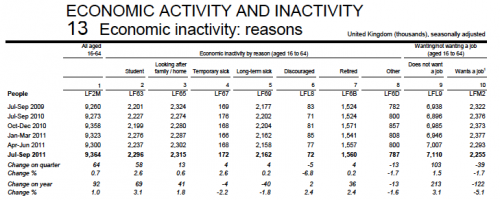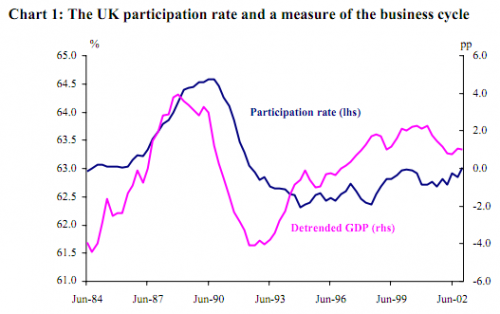Readers Question ‘Evaluate two policies which the government might adopt to reduce the male inactivity rate’
Main Reasons for Inactivity in Labour Market
Inactivity rates imply that people have left the labour market and are not able or are unwilling to seek employment. According to the ONS, inactivity rates can be caused by:
- Being a student
- Looking after family/home
- temporary sickness
- long-term sickness
- Discouraged
- Retired (early)
- Other

Policies To Reduce Inactivity Rates
1. Make It more difficult to gain sickness / long term disability benefits. It is argued that it has become too easy for the long term unemployed to be given sickness benefits. The government could introduce a scheme where those on benefits are revaluated every 12 months and given the option to take on light work. This could help reintegrate them into the labour market.
However, it can be difficult for the government to intervene. If checks are too strict people unable to work are forced into working even though it is detrimental to health; this leads to a less productive labour force.
2. Education and Training. Another solution could be to provide education and training to older people who have become demotivated and left the labour market. Better skill training could encourage people to go out and look for work again. However, this is quite expensive, takes time and may not be very satisfactory. – old people may not want to learn new skills
3. Better Childcare
A significant cause of inactivity is looking after family / home. Better childcare may help people go out to work.
4. Policies to Re-motivate People back into work. Stress benefits of work and disadvantages of staying at home. However, a government advertising campaign is likely to be of limited value.
Participation Rate and Economic Activity
Evidence suggests the participation rate is highly cyclical. In a recession, the decline in job prospects leads to a decline in participation rates as workers become demotivated. With improvements in economic activity, people return to the labour market. Therefore, a policy to improve participation rates is to avoid recessions

Source: participation rates at Bank of England pdf
Related
- Participation rates
- Economic inactivity – definition and reasons

2 thoughts on “Male Inactivity Rates in UK 2008”
Comments are closed.